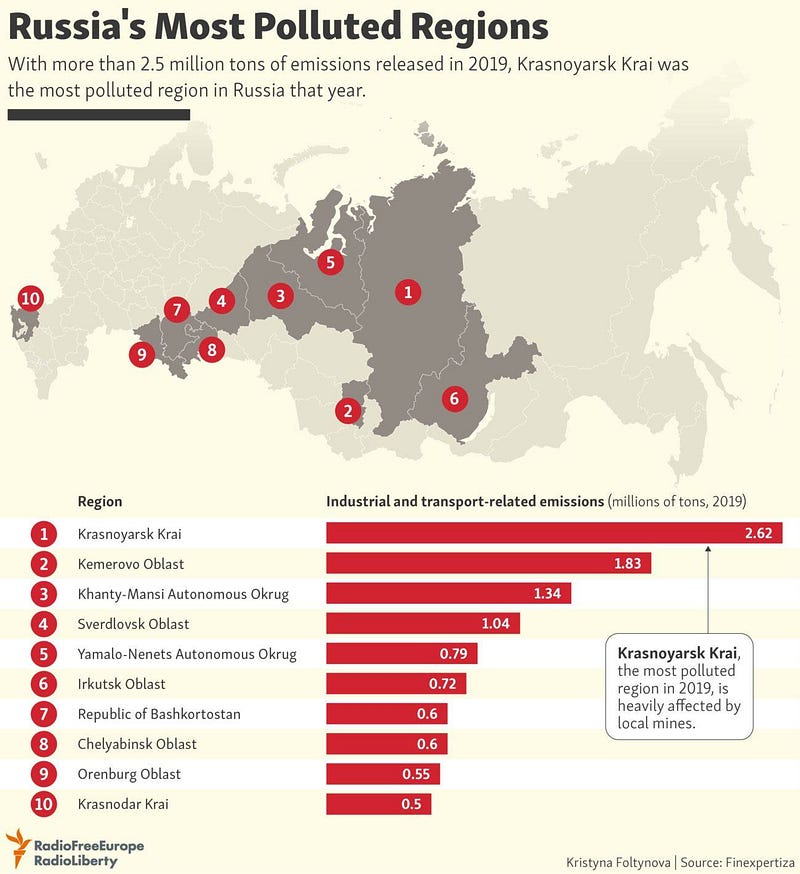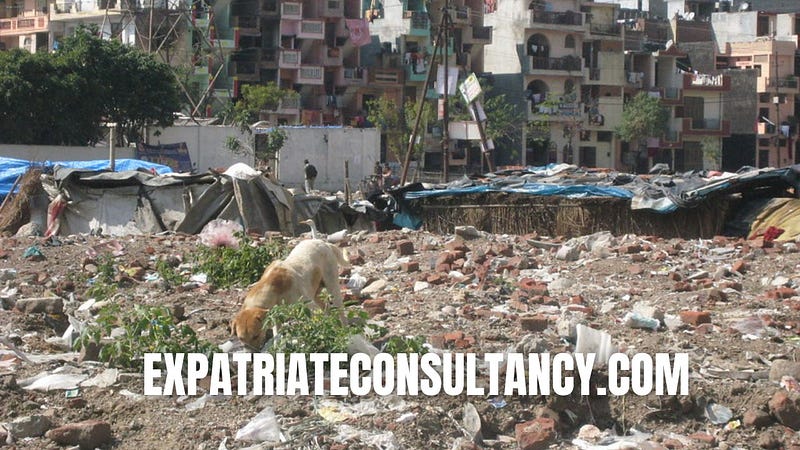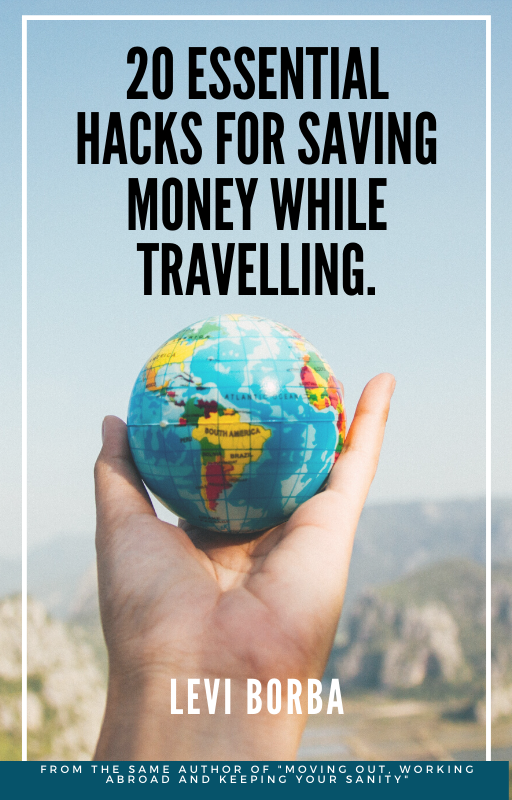We analyzed air pollution, water quality, and wastewater disposal to list the dirtiest cities in the world
What makes a city… dirty?
When I was 21, I moved from a countryside town where the air smelled like orange cake (since we had some fruit processing plants around) to an 11-million-resident metropolis. Every day on my way back from work, I needed to take a road close to a river that smelled like sewage (and probably had some illegal sewage discharges on it).
The streets had rats (I never saw an urban rat in my life until I moved there), and the air was so dirty during the winter that after a day out, you could rub a white napkin in your hair and it would turn gray. My lungs are glad that I don’t live there anymore.
That was a dirty city for me, and I bet you agree with me.
And using criteria that measure air and water quality, plus sewage treatment, and my team at Expatriate Consultancy compiled this list of the dirtiest cities in the world in 2022.
While you will not (surprisingly) find Detroit in the list below, you can find it among the most dangerous cities in Michigan.
This is not the first time we have published a polemical ranking. On other occasions, we told you about:
- The most dangerous city in each European country
- The 10 most dangerous cities in Europe
- The 8 safest big cities in the US
- Cities with the most public libraries in the world (OK, this one here was not very polemical, but equally interesting).
- The Seven Countries With the Worst Work-Life Balance in the World
- The most (and the least) beautiful capital cities in Europe.
This, however, promises to be our most surprising rank ever. But first, the criteria.
Criteria to Define the Dirtiest Cities in the World
To define the dirtiest places in the world, we combined 3 measures and 1 filter. Of course, you may disagree with them (and we invite you to share your opinion in the comment section), but with the data available, this is quite a good set of indicators — I would also like to add a measure of the number of rats per habitant, but I couldn’t find it anywhere.
1 — Only one city per country.
We didn’t want to make an uninteresting list, so this first criterion may surprise you. However, here is our point: we didn’t want an entire ranking only with cities from India, China, and Pakistan. If we simply made a ranking of the 10 dirtiest cities in the world, all of them would be from these 3 places.
We also filtered only cities with more than 150 thousand residents, since smaller cities may have unreliable data due to a lack of measuring points.
2 — Air quality index (AQI)
We enjoy breathing fresh, clean air. This was one of the biggest differences I felt when moving to a large city. But how can we measure the air quality?
For this purpose, there is the AQI (Air Quality Index), an index that measures, among others, the harmful PM2.5 concentration. Fine particulate matter (PM2.5) is a form of pollution in the air that can be harmful to people’s health during prolonged exposures.
2.5 in this case means their size in micrometers. Particles that are that small can easily travel deeply into the respiratory tract, reaching the lungs.
The AQI also measures other pollutants, like:
- Ground-level ozone
- Carbon monoxide
- Sulfur dioxide
- Nitrogen dioxide
For this ranking, we used the AQI calculated by the Swiss air quality technology company IQAir.
3 — Unsafe drinking water EPI Score
This indicator was measured on a national level for the Environmental Performance Index (EPI) compiled by Yale and Columbia universities on a national level.
They measure the harm caused by unsafe drinking water using the number of age-standardized, disability-adjusted life-years lost per 100,000 persons due to exposure to unsafe drinking water.
A score of 100 indicates a country is among those with the lowest rates of unsafe drinking water in the world, while a score of 0 indicates a country is among those with the worst drinking water. In other words, the higher the score here, the better.
4 — Wastewater treatment
Around the world, about 52% of sewage is treated. But the rates of sewage treatment in different countries are very different. For example, about 74% of the sewage in high-income countries is treated, but only 4.2% on average in developing countries.
Sewage treatment in this case includes managing human waste and solid (often industrial) waste.
In the section of each city, you can find the sources for the percentage of treated sewage. In some cases, the data was not available.

The Dirtiest Cities in the World
Remember that the ranking only allows one city per country, therefore the second position is NOT the second worst city in the world, but the dirtiest outside the country of the first place. The third place is the dirtiest outside of the first and second-place countries, and so on.
Krasnoyarsk, Russia
The main reason for pollution in Krasnoyarsk is its location, relatively near major industrial centers like Norilsk.
The second reason for pollution is its size. Krasnoyarsk is one of the largest cities in Russia, with a population of 1 million people.
Surprisingly, despite Russia being a major gas exporter, Krasnoyarsk is NOT connected to the Russian gas pipeline system, so often people resort to burning trash to keep warm during winter. Gazprom recently used video footage of the city freezing in winter to warn Europe that the same could happen with Europe due to sanctions — ironic, right? It was one of those times when war propaganda looked like a comedy sketch.
The third reason is the little enforcement of environmental laws (a common factor in almost all cities listed in this article).

Population: 1 million residents.
Air Quality Index of City: 49.8μg/m, almost 10 times higher than the maximum recommended of 5μg/m
Unsafe drinking water EPI Score: 55.8. 55th place among the 180 countries measured.
Sewage Treatment Percentage: The data for Krasnoyarsk specifically was not available, but in Russia, less than 45% of the sewage is connected to treatment stations. Since Krasnoyarsk is a remote region, one could expect this number to be even smaller.
Kathmandu— Nepal

Kathmandu has no proper disposal system for garbage. Garbage piles up on streets and sometimes, it gets burned by the people living nearby.
On top of that, people throw their waste into rivers and lakes without realizing that they are harming nature and their own environment by doing so.
The lack of proper waste management systems leads to clogged drains, overflowing sewage lines, etc., all of which result in flooding during the monsoon season.
Population: 1.442 million residents.
Air Quality Index of City: 50.9 μg/m, more than 10 times higher than the maximum recommended (5μg/m).
Unsafe drinking water EPI Score: 25.9, meaning the 131st place among the 180 countries counted.
Sewage Treatment Percentage: According to IJCRT, less than 7%.

Port Harcourt, Nigeria
Port Harcourt has experienced an exponential surge in occurrences of respiratory illnesses, attributable mostly to illicit crude refining in various regions of the city.
The sky frequently becomes black, not from rain clouds, but from rising black dust from hydrocarbon pollution, which quickly covers all exposed surfaces and is inhaled by innocent citizens.
Port Harcourt, formerly a pristine and verdant “Garden City,” has devolved into a black dust city.
Population: 1 million people.
Air Quality Index of City: 51.6μg/m, over 10 times higher than the max. recommended of 5μg/m
Unsafe drinking water EPI Score: 4.3, meaning the 177th place among the 180 countries measured.
Sewage Treatment Percentage: 0. So far, there are no wastewater treatment plants in Port Harcourt.
Dushanbe, Tajikistan
Dushanbe has a high concentration of polluting enterprises, including cement and coal power plants, as well as local factories and waste-burning facilities.
Coal is used as a raw material in the generation of energy by many urban industries. The city has 24 companies that generate heat by burning coal fuel. Dushanbe TPP 2, run by the state energy corporation “Barki Tojik,” is the largest of them.
Population: 770,027 people.
Air Quality Index of City: 59.5μg/m, almost 12 times higher than the maximum recommended.
Unsafe drinking water EPI Score: 31.7, 119th place among the 180 countries measured.
Sewage Treatment Percentage: 13.4%, according to the WHO.
Osh, Kyrgyzstan
According to IQAir, these are the primary sources of pollution increases in Osh:
1 — Vehicle emissions, with automobiles, motorbikes, and heavy-duty vehicles such as trucks or lorries traversing the length of the city for everyday commutes. Many of these cars would use inexpensive, low-quality diesel, which can discharge more pollution than cleaner fuels.
2 — Poorly managed construction sites release fine particulate matter and other harmful pollutants.
3 — Mining close to the city emits PM10, PM2.5, heavy metals, and other harmful substances.
4— Winter pollution surges are caused by burning wood and other types of organic matter for heating and cooking.
Population: 256,763 people.
Air Quality Index of City: 60.9μg/m, over 12 times higher than the recommended maximum of 5μg/m.
Unsafe drinking water EPI Score: 47.3, 78th place among the 180 countries measured.
Sewage Treatment Percentage: 19.3% of household wastewater is treated, according to the WHO.
Karaganda, Kazakhstan

Karaganda is close to Temirtau, Kazakhstan’s iron industry hub, and home to the country’s largest steel production plant, Karaganda Metallurgical Combine. The plant is operated by ArcelorMittal Temirtau, a subsidiary of the worldwide industrial conglomerate ArcelorMittal.
The city’s industrial pollution is so bad that occurrences of black snow have been documented. Many people there believe that the metallurgical complex is to blame for the black snow.
Population: 500,826 residents.
Air Quality Index of City: 75.5μg/m, 15 times higher than the recommended max. of 5μg/m.
Unsafe drinking water EPI Score: 56, 54th place among the 180 countries measured.
Sewage Treatment Percentage: According to the UNECE, 50% of industrial wastewater is not treated before discharging in Kazakhstan.
N’Djamena, Chad
N’Djamena has problems with heavy metal pollutants discharged in the Chari river. Besides, Chad’s capital city has seen a fast population increase and a decrease in water supplies in recent years, without sanitation keeping the same pace as the number of inhabitants surges.
Population: 1,5 million people.
Air Quality Index of City: 77.6μg/m, over 15 times higher than the maximum recommended.
Unsafe drinking water EPI Score: Data not available.
Sewage Treatment Percentage: According to UNICEF, 10%.
Dhaka, Bangladesh

Brick kilns, exhaust fumes from automobiles, and dust from construction sites were identified as the three primary contributors to air pollution in Dhaka in a research that was published by the local Department of Environment (DoE) and the World Bank.
Population: 8.9 million residents.
Air Quality Index of City: 78.1μg/m, almost 16 times higher than the maximum recommended of 5μg/m.
Unsafe drinking water EPI Score: 26.9, 128th place among the 180 countries measured.
Sewage Treatment Percentage: 17% of the wastewater is treated.
Faisalabad, Pakistan
Faisalabad is the third largest city in Pakistan and is growing both economically and in terms of population. Because it is in the middle of the country, it is a major industrial and distribution hub.
Pollution in Faisalabad is mostly caused by things like vehicle emissions. There are a lot of cars, motorbikes, and heavy-duty vehicles.
There are also a lot of factories and textile mills in the city, as well as thousands of brick kilns, many of which use dirty fuels and are not regulated by the same rules as the rest of the city.
Population: 3,2 million residents.
Air Quality Index of City: 94.2μg/m, almost 19 times higher than the maximum recommended.
Unsafe drinking water EPI Score: 15.3, 151st place among the 180 countries measured.
Sewage Treatment Percentage: According to WWF Asia, 20% of the wastewater is treated in Faisalabad.
Hotan, China
Hotan is a town in the Chinese province of Xinjiang. Because of the different ethnicities that live and work in the area, the area has a strong Uyghur presence.
However, Hotan’s proximity to the Takla Makan, the world’s biggest shifting sand desert, exposes it to frequent sandstorms, which add to the contaminants in the air, causing the quality to deteriorate.
As a result, desert sand is the primary culprit.
However, industry in and around Hotan, Kashgar, Aksu, and other southern Xinjiang cities is fast expanding, and its environmental impact is not strictly monitored. Toxins are released into the surrounding atmosphere as a result of the area’s exponential industrial growth, which affects the residents.
Population: 408 894 people.
Air Quality Index of City: 101.5μg/m, more than 20 times higher than the maximum recommended of 5μg/m.
Unsafe drinking water EPI Score: 58.4, 45th place among the 180 countries measured.
Sewage Treatment Percentage: According to CEIC, 96.1% of the wastewater residues of Xinjiang (the province where Hotan is located) are treated.
Now time to answer the question we have been waiting for…
What is the dirtiest city in the world?
The Dirtiest City in the World and (the Dirtiest City in India)
The dirtiest city in the world is Ghaziabad, India.

The main sources of air pollution in Ghaziabad are vehicular emissions, road dust, construction and demolition operations, industries, garbage burning, agricultural waste burning, and so on.
Ghaziabad is an old city that is growing increasingly crowded as residents from various regions of Uttar Pradesh continue to flock here.
Because there is no good public transportation in the city, individuals rely on their own vehicles, causing horrific traffic jams. Ghaziabad also contains numerous small and major industries, many of which do not adequately dispose of their residues.
Population: 1.7 million people.
Air Quality Index of City: 102μg/m, more than 20 times higher than the recommended maximum of 5μg/m.
Unsafe drinking water EPI Score: 18.3, 141st place among the 180 countries measured.
Sewage Treatment Percentage: While there is no specific information about Ghaziabad, the state where the city is located (Uttar Pradesh) has a treatment capacity of only 37.2% of the wastewater generated.
The Dirtiest Cities in the World in 2022 — Conclusion
As we traverse the globe, we encounter a stark reality in many urban areas. The world’s most polluted cities, a list that unfortunately includes six of the world’s top major cities, are grappling with alarming levels of air pollution. The city’s AQI increases, signaling a dangerous quality of air that poses a daily strain on lung health. This is particularly evident in India, where many Indian cities, including the city in the world based on poor air quality, are located.
Despite the many advantages to living in condensed urban areas, the poor air quality and health and sanitation challenges are undeniable.
Most of the Dirtiest Cities in the World are in Asia
The majority of the dirtiest cities in the world are located in Asia, with countries like India, Pakistan, and China dominating the list of most polluted cities. These cities suffer from poor air quality, largely due to industrial emissions, burning of fossil fuels, and lack of proper sustainable infrastructure. In 2023, cities like Dammam in Saudi Arabia, Lahore in Pakistan, and Delhi in India were ranked among the most dangerously polluted cities in the world.
Pollution is Higher in Industrialized but not Developed Countries
Many of the dirtiest cities are found in industrialized but not fully developed countries. These countries often lack the necessary infrastructure and resources to effectively manage pollution and waste. As a result, they struggle with issues like poor air quality, solid waste management, and hazardous living conditions for their citizens. This is in stark contrast to cities in Europe and Australia, which have very good indicators of cleanliness and are often ranked among the cleanest cities in the world.
Remember: the list has a maximum of one city per country, therefore, the 2nd place is NOT the 2nd dirtiest city in the world, but the dirtiest outside the country of the 1st place. The 3rd place is the dirtiest outside the country of the 1st and the 2nd, and so on.
Check also: Why This Country in Africa Is Growing So Fast?
11 — Krasnoyarsk, Russia
10 — Kathmandu- Nepal
09 — Port Harcourt, Nigeria
08 — Dushanbe, Tajikistan
07 — Osh, Kyrgyzstan
06 — Karaganda, Kazakhstan
05 — N’Djamena, Chad
04 — Dhaka, Bangladesh
03 — Faisalabad, Pakistan
02 — Hotan, China
The dirtiest city in the world: Ghaziabad, India
Pollution and a Dirty Environment Harm Human Health
Air pollution poses a significant threat to human health, causing respiratory infections, heart disease, lung cancer, and other chronic illnesses. Both short-term and long-term exposure to air pollutants can lead to serious health problems, particularly for vulnerable populations such as children, the elderly, and those with pre-existing health conditions. In fact, air pollution is now considered the biggest environmental risk for early death, responsible for more than 6 million premature deaths each year.
Europe and Australia Have Very Good Indicators of Cleanliness
In contrast to the dirtiest cities in the world, Europe and Australia boast some of the cleanest cities, with high standards of cleanliness and air quality. Cities like Zurich, Switzerland, and Perth, Australia, are ranked among the least polluted cities in the world, thanks to their commitment to sustainable practices, effective waste management, and strict pollution regulations. These cities serve as examples of how proper planning and investment in clean technologies can lead to healthier, more livable urban environments for their citizens.
If you are into some cleaner cities for your next holiday, check our article about the best places to visit in Europe each month of the year.
If you enjoyed this article about the dirtiest cities in the world, here are a few other reading suggestions for you:
Due to Huge Economic Growth, Emigrants Are Back to This Country
A Guide to the Easiest Countries to Adopt a Baby From
The Dreamy Destination That’s 50% Cheaper to Live In than Spain or Florida
Subscribe (for free) to receive my articles directly in your inbox and receive a special gift. If you enjoy this article, please consider becoming a Medium member by using this link and have access to premium, unbiased content from authors not tied to big media.
Levi Borba is the founder of The Expatriate Consultancy, creator of the channel The Expat, and best-selling author. Some of the links of this article may be affiliate links, meaning that the author will have a commission for any transaction.




